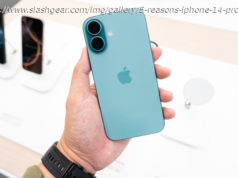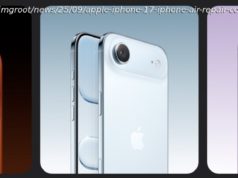The new BlackBerry Key2 LE sports a more lightweight, stylish design and a lower price tag as BlackBerry courts both entry-level consumers and the B2B market at IFA in Berlin.
BERLIN—BlackBerry knows what its fans want. After the launch of the BlackBerry KeyOne last year and the BlackBerry Key2 in June, the new Key2 LE joins its two precedessors in sticking to the basics of what really appeals to BlackBerry users—the keyboard.
Announced here at the IFA tech trade show, the BlackBerry Key2 LE varies slightly in design and hardware but boasts the device elements for which BlackBerry is known: privacy and security.
Interestingly, BlackBerry didn’t feel the need to try something dramatically different with the LE. The rumored no-keyboard BlackBerry device and the even more unlikely Palm device were nowhere in sight. Several months after launch, the Key2 can be found in most of BlackBerry’s core markets and should be available in all of them by late September. There’s also been increased device deployment and enterprise interest in the business-to-business (B2B) space.
The Key2 LE is intended to build off the success of the Key2 and broaden BlackBerry’s appeal by acting as an entry point for new customers and markets. That means in both design and price, the LE is the more affordable, less premium version of the Key2.
The lighter weight and plastic build does make it seem a little less durable, but the Key2 LE still has a pane of Gorilla Glass on the front. The back is grippy, and felt quite comfortable in my hand. Dimensions are mostly the same as the Key2, meaning it can be a little wide if you’re trying to use it with one hand. The 4.5-inch 1080p screen is sharp and fairly bright, though it may be reflective in direct sunlight. The screen certainly reflected the light in the brightly lit room in which I gave the smartphone a spin.
Most other physical features are the same. You get the same buttons in the same location, including the programmable function key on the side, which by default is mapped to Google Assistant with a single press or Google Lens with a double press. Unlike Samsung with Bixby, functions aren’t hard-coded so you can remap it to the app of your choice.
The keyboard is approximately 15 percent larger than the KeyOne’s, and has the same easy-to-press angled keys as the Key2. I found the typing experience to be comfortable. Each key is individually programmable through new Speed Key functionality, which enables shortcut access from anywhere on the device at any time.
Where the Key2 has an almost industrial look, with sides of machined aluminum and a weighty feel, the Key2 LE is more lightweight and has a bit more flair. It comes in several colors with a band of bright red (BlackBerry calls it atomic), champagne, and more standard silver running along the sides and in the seams between the keys. The back is still padded with a soft touch finish and stylish, but the new color options are a nice departure from the conservative, professional design on the Key2—especially for users who aren’t going to use it for business.
The one omission here is the removal of the capacitive gestures that allowed you to swipe on the keyboard for different functions. BlackBerry says it removed them because most customers who might be interested in the LE are more keen on using the keyboard itself rather than another side feature.
The Key2 LE may not compromise too much when it comes to most physical features, but it is scaled back in specs. It’s powered by a Qualcomm Snapdragon 636 processor and comes with 4GB of RAM rather than the 660 chip and 6GB of RAM you get on the Key2.
The two storage options are 32GB and 64GB models. You’ll find a 3,000mAh battery under the hood (charged by USB-C) with some added «intelligent» software features that can provide contextual reminders to charge it. For instance, the phone will keep track of your calendar so it can remind you to charge when you have events coming up. The Key2 LE will also refrain from reminders when the device knows you’ll be using it.
There’s also Qualcomm Quick Charge 3.0 fast charging with the included adapter. BlackBerry says customers can get 22 hours of battery life out of the Key2 LE under standard usage, but we’ll put it to our more intensive streaming test back in the PC Labs to see how it does.
We generally weren’t too impressed by the camera on the Key2, and it doesn’t look like the LE will change much in that regard. However, it is worth noting that BlackBerry added Portrait and Slo-Mo modes in the LE.
There’s a 13MP and 5MP rear sensor, which took okay shots in terms of clarity and color reproduction when tested in the brightly lit room during our hands on. Launching the camera app felt a bit slow and took a couple seconds to snap photos. The Key2 LE also doesn’t seem like it’ll do too well in lower light settings, but we’ll reserve judgment for more thorough testing.
Software should be more or less identical to the Key2. That means you get a device running Android 8.1 Oreo with an update to Android Pie promised.
In addition, BlackBerry has some of its own custom apps and software including the DTEK security dashboard app and Locker, which helps you manage device security and status. Locker is particularly interesting because you can ‘lock» various apps, hiding them from access until an additional fingerprint unlock or pin code is entered. If you have selfies on the risque side, you can put photos in Locker and keep them from being synced to the cloud.
BlackBerry may call the Key2 LE entry-level, but it’s closer to what we’d consider midrange in the unlocked market .
The 32GB Key2 LE should start at $399, while the 64GB version should come in at $449. That puts it in the same range with the midrange Moto G6 and just shy of higher-end unlocked phones like the OnePlus 6. Most notably, the Key2 LE comes in at a more palatable price point for US consumers who tend to buy phones from carriers and only buy cheaper unlocked devices
The real sales for the Key2 LE may not come from average consumers, but from businesses.






